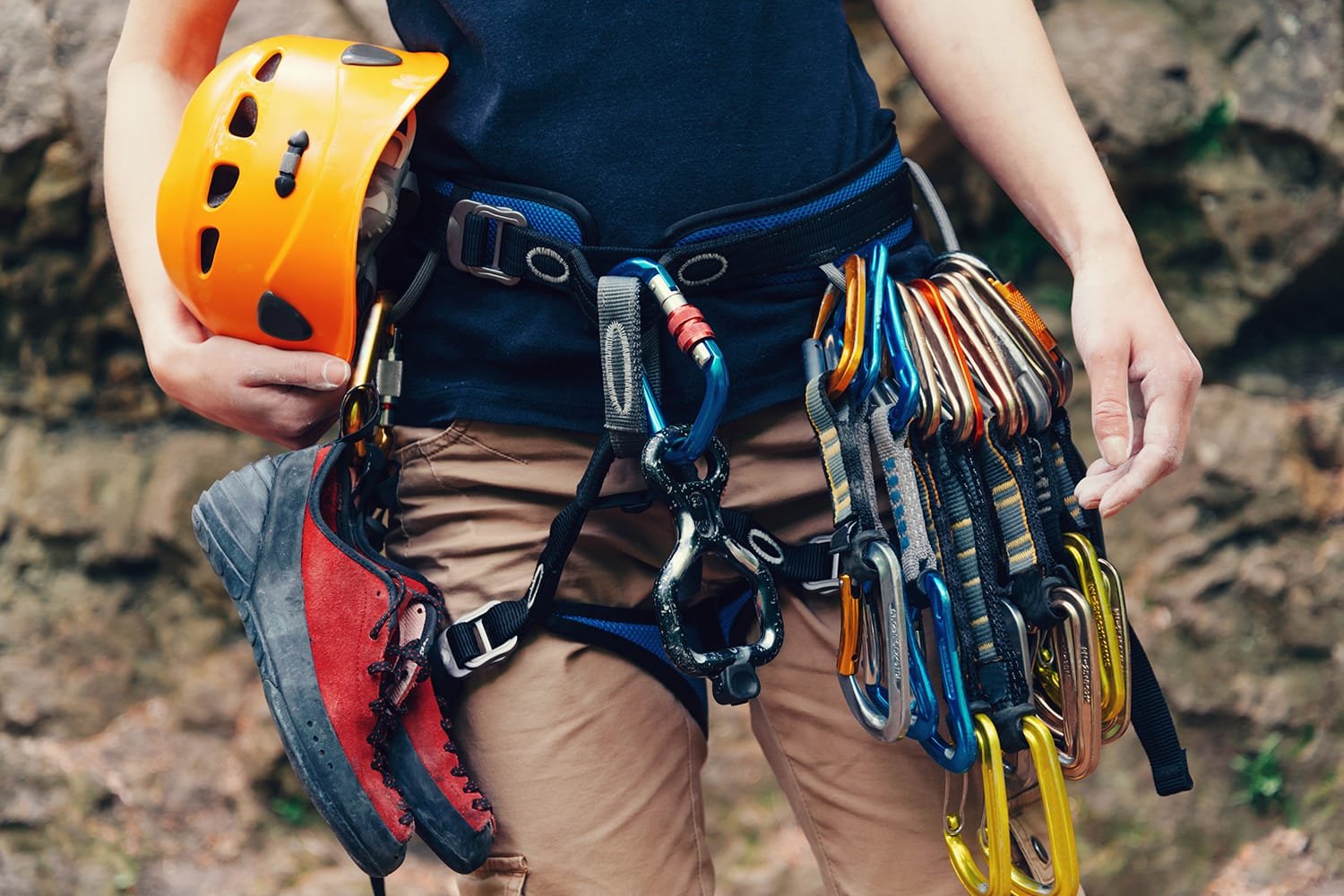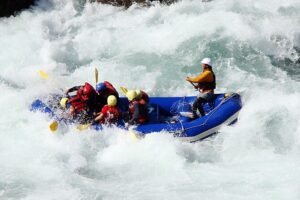High altitude climbing is a thrilling and demanding activity that requires a blend of physical endurance, mental resilience, and the right equipment. Among the essential gear, the climbing harness stands out as a critical component. It ensures safety, comfort, and functionality, which are crucial for navigating the challenging environments encountered at high altitudes. This comprehensive review explores the latest high altitude climbing harnesses, detailing their features, pros and cons, and suitability for various climbing scenarios.
Understanding Climbing Harnesses
Before delving into specific models, it’s essential to understand the components and types of climbing harnesses available on the market. This knowledge will help you make an informed decision when selecting the best harness for your needs.
Components of a Climbing Harness
- Waist Belt: This is the main support structure that wraps around the climber’s waist. It should be padded and adjustable for comfort and security.
- Leg Loops: These wrap around the climber’s thighs and are usually adjustable. They should provide a snug fit without restricting movement.
- Belay Loop: A reinforced loop located at the front of the harness where the belay device and carabiners are attached.
- Gear Loops: These loops are used to carry climbing gear such as carabiners, quickdraws, and cams. The number and position of gear loops can vary.
- Adjustable Buckles: These are used to finetune the fit of the waist belt and leg loops. Quickadjust buckles are common for convenience.
- Haul Loop: A loop at the back of the harness used to attach a second rope or haul line.
Types of Climbing Harnesses
- Sport Climbing Harnesses: Designed for sport climbing, these harnesses are lightweight with minimal padding and gear loops.
- Trad Climbing Harnesses: These harnesses have more gear loops and are designed to carry a larger amount of gear.
- Alpine/Mountaineering Harnesses: Built for highaltitude and alpine climbing, these harnesses are lightweight, adjustable, and often feature quickrelease leg loops for easy on/off over crampons.
- Big Wall Harnesses: These are heavyduty harnesses designed for multiday climbs, offering maximum padding and support for hanging belays.
Key Considerations for HighAltitude Climbing Harnesses
When selecting a harness for highaltitude climbing, consider the following factors:
- Weight: Lightweight harnesses reduce fatigue during long climbs.
- Comfort: Adequate padding and ergonomic design are crucial for long periods of wear.
- Adjustability: Easytoadjust buckles and leg loops ensure a snug fit over varying layers of clothing.
- Gear Capacity: Sufficient gear loops and attachment points are essential for carrying all necessary equipment.
- Durability: Highquality materials and construction ensure the harness can withstand harsh conditions.
- Certification: Look for harnesses that meet UIAA and CE safety standards.
Latest High Altitude Climbing Harnesses
- Petzl Altitude Harness
The Petzl Altitude harness is designed specifically for high altitude and ski mountaineering. It is extremely lightweight and packable, making it ideal for climbers who need to carry minimal weight.
Features:
Weight: 150 grams (size M).
Construction: Woven polyester with hightenacity polyethylene strands.
Gear Loops: Two integrated gear loops and additional slots for ice screw holders.
Adjustability: DoubleBack buckles for easy adjustment.
Packability: Folds into a compact pouch for easy transport.
Pros:
Ultralightweight and compact.
Quick and easy to put on, even with skis or crampons.
Minimalist design that doesn’t compromise on essential features.
Cons:
Limited gear carrying capacity.
Minimal padding, which may reduce comfort during prolonged use.
2. Black Diamond Couloir Harness
Overview:
The Black Diamond Couloir harness is a versatile option for mountaineering, glacier travel, and ski touring. It combines lightweight construction with a robust design to handle demanding conditions.
Features:
Weight: 215 grams (size M/L).
Construction: Nylon webbing and hydrophobic foam.
Gear Loops: Four gear loops and four Ice Clipper slots.
Adjustability: Speed buckles on the waist and leg loops for quick adjustments.
Packability: Folds into a small, transportable package.
Pros:
Lightweight and easy to pack.
Ample gear loops and Ice Clipper slots for organization.
Comfortable fit with hydrophobic foam padding.
Cons:
Slightly heavier than some ultralight models.
Foam padding may compress over time.
3.Arc’teryx AR395a Harness
Overview:
The Arc’teryx AR395a harness is a versatile and durable harness suitable for a range of climbing activities, including highaltitude and alpine climbing. It features advanced Warp Strength Technology™ for superior comfort and support.
Features:
Weight: 395 grams (size M).
Construction: Warp Strength Technology™ load distribution.
Gear Loops: Four gear loops, rear haul loop, and four Ice Clipper slots.
Adjustability: Adjustable leg loops with quickrelease buckles.
Comfort: Anatomically designed with ample padding.
Pros:
Excellent weight distribution and comfort.
Durable and wellsuited for multidiscipline use.
Plenty of gear loops and attachment points.
Cons:
Heavier than some other highaltitude harnesses.
Higher price point.
4. Mammut Zephir Altitude Harness
Overview:
The Mammut Zephir Altitude harness is an ultralightweight harness designed for ski mountaineering and highaltitude climbing. It offers a minimalist design without sacrificing safety or functionality.
Features:
Weight: 215 grams (size M).
Construction: Split Webbing technology for weight distribution.
Gear Loops: Two gear loops and two ice screw attachments.
Adjustability: Speed buckles for quick adjustments.
Packability: Highly packable design.
Pros:
Extremely lightweight and packable.
Comfortable for its minimalist design.
Speed buckles for easy adjustments.
Cons:
Limited gear loops.
Minimal padding, which may affect comfort during long climbs.
5. Edelrid Ace Harness
Overview:
The Edelrid Ace harness is designed for all around performance, including high altitude and alpine climbing. It combines lightweight construction with excellent comfort and adjustability.
Features:
Weight: 315 grams (size M).
Construction: 3D mesh padding and Dyneema® webbing.
Gear Loops: Four gear loops and two attachment points for ice screws.
Adjustability: Slide Block buckles for precise adjustments.
Comfort: Ergonomic design with ample padding.
Pros:
Lightweight and comfortable.
Good balance of gear loops and attachment points.
Durable construction for harsh conditions.
Cons:
Not as ultralightweight as some other models.
Slightly bulkier when packed.
6. CAMP Alp CR3 Harness
Overview:
The CAMP Alp CR3 harness is a lightweight and versatile harness designed for alpine climbing and highaltitude expeditions. It features a comfortable design with ample adjustability and gear storage options.
Features:
Weight: 360 grams (size M).
Construction: 3mm EVA foam padding and polyester webbing.
Gear Loops: Four gear loops and two slots for ice screw clips.
Adjustability: Autolocking buckles on the waist and legs.
Comfort: Ergonomic fit with padded waist and leg loops.
Pros:
Comfortable and wellpadded.
Plenty of gear storage options.
Durable and reliable for tough conditions.
Cons:
Heavier than some other highaltitude specific harnesses.
Bulkier design may not be as packable.
7. Petzl Sitta Harness
Overview:
The Petzl Sitta harness is an advanced harness designed for highperformance climbing, including highaltitude and alpine ascents. It utilizes Wireframe Technology™ for superior weight distribution and comfort.
Features:
Weight: 270 grams (size M).
Construction: Wireframe Technology™ with Spectra® strands.
Gear Loops: Four gear loops and two Caritool tool holder slots.
Adjustability: DoubleBack HD buckles for precise adjustments.
Comfort: Flexible and ergonomic design.
Pros:
Excellent weight distribution and comfort.
Lightweight yet durable.
Plenty of gear storage options.
Cons:
Higher price point.
Limited leg loop adjustability compared to some other models.
Detailed Comparison and Analysis
To help you choose the best harness for your highaltitude climbing adventures, let’s compare these models across several key factors:
Weight and Packability
For highaltitude climbing, reducing weight is crucial to minimize fatigue. The Petzl Altitude harness stands out as the lightest option at 150 grams, followed closely by the Mammut Zephir Altitude and Black Diamond Couloir, both at 215 grams. These harnesses also offer excellent packability, making them easy to stow in your pack when not in use.
Petz
Altitude: Its ultralightweight design and compact packability make it ideal for climbers who prioritize minimal weight. It folds into a small pouch, making it easy to carry even in the most restrictive packing situations.Mammut Zephir Altitude: This harness combines lightweight construction with a highly packable design, ensuring it takes up minimal space in your backpack. The split webbing technology enhances weight distribution, making it a comfortable option despite its minimal weight.Black Diamond Couloir: Slightly heavier than the Petzl Altitude but still very lightweight, this harness is designed to fold into a small, transportable package. It’s an excellent choice for those who need a balance between weight and durability.
Comfort and Adjustability
Comfort is vital, especially during long climbs. The Arc’teryx AR395a and Edelrid Ace harnesses excel in this area with their advanced padding and ergonomic designs. Arc’teryx AR395a: Utilizing Warp Strength Technology™, this harness distributes weight evenly, reducing pressure points and enhancing comfort. The anatomical design and ample padding make it suitable for long climbs where comfort is paramount.Edelrid Ace: Featuring 3D mesh padding and an ergonomic design, the Ace harness provides excellent comfort for extended wear. The Slide Block buckles offer precise adjustments, ensuring a secure and comfortable fit.
CAMP Alp CR3: While slightly heavier, this harness offers substantial padding and ergonomic fit, making it a comfortable option for long climbs. The autolocking buckles provide quick and easy adjustments, ensuring a snug fit.
Gear Carrying Capacity
High altitude climbs often require carrying a variety of gear. The Arc’teryx AR395a and CAMP Alp CR3 harnesses provide ample gear loops and attachment points.
Arc’teryx AR395a: With four gear loops, a rear haul loop, and four Ice Clipper slots, this harness offers extensive gear storage options. It’s ideal for climbers who need to carry a large amount of gear.
CAMP Alp CR3: This harness features four gear loops and two slots for ice screw clips, providing plenty of storage for climbing equipment. Its design ensures gear is easily accessible, which is crucial during technical climbs.Petzl Sitta: Despite its lightweight design, the Sitta harness includes four gear loops and two Caritool slots, making it a versatile option for gearintensive climbs. Its Wireframe Technology™ ensures the harness remains comfortable even when loaded with gear.
Durability and Materials
Durability is crucial for withstanding harsh conditions. The Arc’teryx AR395a and Petzl Sitta harnesses use advanced materials like Spectra® strands and Wireframe Technology™ for superior strength and longevity.
Arc’teryx AR395a: Known for its robust construction, this harness is built to last. The Warp Strength Technology™ not only enhances comfort but also ensures the harness can endure the demands of highaltitude climbing.Petzl Sitta: Utilizing Spectra® strands, the Sitta harness offers exceptional durability while remaining lightweight. It’s designed to handle the toughest conditions, making it a reliable choice for highaltitude expeditions.
Black Diamond Couloir: Constructed with nylon webbing and hydrophobic foam, this harness is both durable and waterresistant. It’s designed to withstand the rigors of glacier travel and alpine climbing.
Price and Value
Budget is always a consideration. The Petzl Altitude and Black Diamond Couloir harnesses offer excellent value for their lightweight and functional designs, making them ideal for budgetconscious climbers.
Petzl Altitude: At an affordable price point, this harness provides essential features without breaking the bank. Its lightweight and compact design make it a great value for highaltitude climbers.Black Diamond Couloir: Offering a balance of lightweight construction and durability, the Couloir harness is an excellent value. It’s a versatile option that can handle various climbing scenarios.Arc’teryx AR395a and Petzl Sitta: While these harnesses are more expensive, they provide advanced features and superior comfort. For climbers willing to invest, the higher price points are justified by the enhanced performance and durability.
Practical Tips for Using a Climbing Harness
Selecting the right harness is just the beginning. Proper use and maintenance are equally important to ensure safety and longevity.
Proper Fit
Ensure your harness fits snugly but comfortably around your waist and thighs. Avoid overly tight or loose fits, which can compromise safety and comfort. Take the time to adjust the buckles and leg loops before your climb to ensure a secure fit.
DoubleCheck Buckles
Always doublecheck that all buckles are securely fastened and adjusted before starting your climb. Regularly inspect the buckles for any signs of wear or damage. It’s a good habit to perform a quick safety check with your climbing partner before beginning any ascent.
Gear Organization
Arrange your gear methodically on your harness to ensure easy access during climbs. Practice using gear loops and attachment points efficiently. Knowing where each piece of equipment is located can save valuable time and effort during critical moments.
Maintenance
Regularly inspect your harness for signs of wear, fraying, or damage. Replace any harness that shows significant signs of wear or has been involved in a significant fall. Clean your harness according to the manufacturer’s instructions to maintain its integrity and performance.
Practice
Familiarize yourself with the harness’s features and practice using it in controlled environments before taking it on highaltitude climbs. This includes practicing clipping in and out of gear loops, adjusting buckles, and performing emergency maneuvers.
Selecting the right highaltitude climbing harness involves balancing weight, comfort, durability, and gear capacity. Each of the harnesses reviewed here offers unique advantages tailored to different climbing needs and preferences. The Petzl Altitude and Black Diamond Couloir are excellent lightweight options, while the Arc’teryx AR395a and Petzl Sitta provide superior comfort and advanced features for those willing to invest. The Mammut Zephir Altitude, Edelrid Ace, and CAMP Alp CR3 offer a mix of functionality and comfort, making them versatile choices for various highaltitude climbing scenarios.
Ultimately, the best harness for you will depend on your specific climbing activities, budget, and personal preferences. By considering the features and comparisons outlined in this guide, you can make an informed decision that enhances your safety and enjoyment during your highaltitude climbing adventures. Remember, investing in a highquality harness is an investment in your safety and climbing success.
Additional Considerations
When planning highaltitude climbs, it’s essential to consider other factors that can impact your harness choice and overall safety:
Climate and Weather Conditions
High altitude environments can present extreme weather conditions, including cold temperatures, high winds, and heavy snowfall. Choose a harness that can withstand these elements. Look for materials that are resistant to cold and moisture, and ensure that the harness remains flexible and comfortable in low temperatures.
Layering and Clothing
High altitude climbing often requires wearing multiple layers of clothing to stay warm. Ensure your harness can accommodate these layers without compromising fit and comfort. Adjustable leg loops and waist belts are particularly important to ensure a snug fit over bulky clothing.
Climbing Techniques and Skills
Different climbing techniques and skills may require specific harness features. For example, ice climbing and mixed climbing often require additional gear loops and attachment points for ice tools and screws. Choose a harness that aligns with the specific demands of your climbing style.
Training and Experience
Proper training and experience are crucial for safely navigating highaltitude climbs. Ensure you are familiar with your harness’s features and practice using it in a variety of scenarios. Consider taking a climbing course or working with an experienced guide to enhance your skills and knowledge.
Partner and Team Considerations
Climbing with a partner or team can impact your harness choice. Ensure that your harness is compatible with team climbing systems and techniques. Communication and coordination with your climbing partners are essential for ensuring safety and efficiency during climbs.
Emergency Preparedness
High altitude climbing can involve unpredictable situations and emergencies. Ensure you have a plan in place for potential emergencies and that your harness is equipped with the necessary features for rescue scenarios. This includes understanding how to use your harness for selfrescue and team rescue techniques.
Environmental Impact
Consider the environmental impact of your climbing activities and gear choices. Choose harnesses made from sustainable materials and practices whenever possible. Minimize your footprint by following Leave No Trace principles and respecting the natural environment.
By considering these additional factors, you can enhance your overall climbing experience and ensure that you are wellprepared for the challenges and rewards of highaltitude climbing. Investing in the right harness and taking the time to properly train and prepare will contribute to your safety, enjoyment, and success in the mountains.
Final Thoughts
High altitude climbing is a demanding and exhilarating activity that requires careful planning and the right equipment. A highquality harness is a critical component of your climbing gear, providing the safety, comfort, and functionality needed to tackle challenging environments. The harnesses reviewed in this guide offer a range of features and benefits, catering to different climbing styles, preferences, and budgets.
Whether you prioritize lightweight design, superior comfort, or extensive gear storage, there is a harness on this list that will meet your needs. Take the time to evaluate your climbing goals, consider the specific demands of highaltitude climbing, and choose a harness that enhances your safety and performance.
Remember, the journey to the summit is as important as reaching the top. With the right harness and proper preparation, you can enjoy the incredible experiences and breathtaking views that highaltitude climbing has to offer. Stay safe, climb smart, and savor every moment of your adventure in the mountains.





